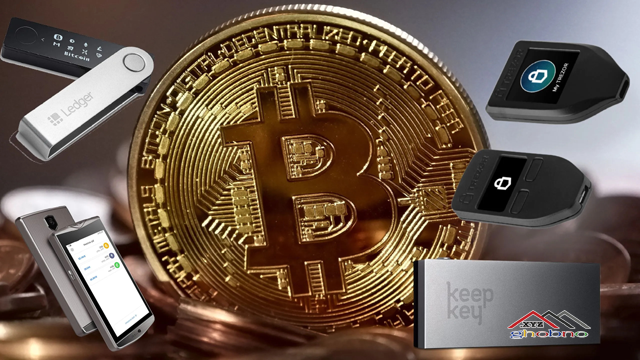There are a variety of storage options available, each with different levels of security and convenience. In this guide, we’ll cover the most popular storage methods and help you choose the right one for your needs.
Hot Wallets
Hot wallets are software-based wallets that store your Bitcoin on a device connected to the internet. These wallets are convenient and easy to use, but they’re also susceptible to hacking and malware attacks.
- Desktop Wallets: These wallets are downloaded and installed on your computer. They offer a higher level of security than online wallets, but they’re still vulnerable to malware attacks.
- Mobile Wallets: These wallets are downloaded and installed on your smartphone. They’re convenient for small transactions, but they’re also vulnerable to malware and hacking attacks.
- Online Wallets: These wallets are hosted on a website or app. They’re the most convenient option, but they’re the least secure. If the website or app is hacked, you could lose your Bitcoin.
Cold Wallets
Cold wallets are offline wallets that store your Bitcoin on a device that’s not connected to the internet. While they’re less convenient to use, they offer a much higher level of security and protection against hacking and malware attacks.
- Hardware Wallets: These wallets are physical devices that store your Bitcoin and require you to physically connect them to a computer or smartphone to access your funds. They offer the highest level of security and protection, but they can be expensive.
- Paper Wallets: These are physical copies of your public and private keys that you print out or write down and keep in a safe place. They’re a cheap and secure option, but they’re also vulnerable to loss or damage.
Hardware Wallets
Hardware wallets are physical devices that store your Bitcoin on a device that’s not connected to the internet. They’re considered to be the most secure storage option for Bitcoin.
- Trezor: Trezor is a popular hardware wallet that offers a high level of security and protection. It’s easy to use and supports a variety of cryptocurrencies in addition to Bitcoin.
- Ledger Nano S: Ledger Nano S is another popular hardware wallet that offers a high level of security and protection. It supports a variety of cryptocurrencies in addition to Bitcoin.
Paper Wallets
Paper wallets are a cheap and secure option for storing your Bitcoin. They involve printing out or writing down your public and private keys and keeping them in a safe place.
However, paper wallets are vulnerable to loss or damage, and they’re not the most convenient option for accessing your funds. They’re best used for long-term storage rather than daily use.
Conclusion
Choosing the right storage method for your Bitcoin depends on your individual needs and preferences. If you’re looking for convenience, hot wallets are the way to go, but if you’re looking for maximum security, cold wallets are the best option.
Hardware wallets like Trezor and Ledger Nano S offer the most secure storage for your Bitcoin, while paper wallets are a cheap and secure option for long-term storage. Whichever option you choose, make sure to take the necessary precautions to keep your Bitcoin safe and secure.
Frequently Asked Questions
- What is the most secure way to store Bitcoin?
- Hardware wallets like Trezor and Ledger Nano S are considered to be the most secure way to store Bitcoin.
- What is a hot wallet?
- A hot wallet is a software-based wallet that stores your Bitcoin on a device connected to the internet.
- What is a cold wallet?
- A cold wallet is an offline wallet that stores your Bitcoin on a device that’s not connected to the internet.
- Can I lose my Bitcoin if I lose my hardware wallet?
- No, as long as you have your recovery seed, you can recover your Bitcoin on a new device.

